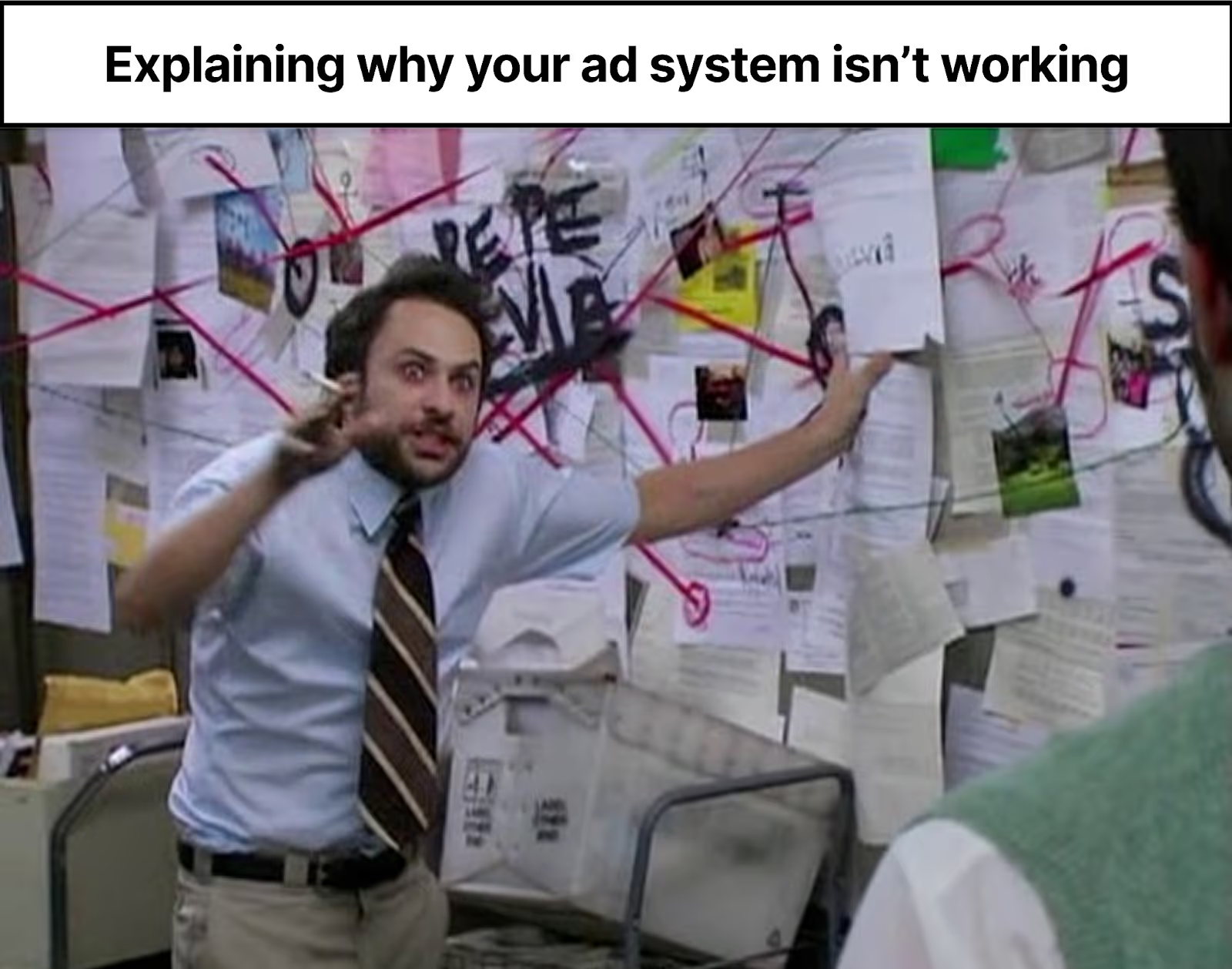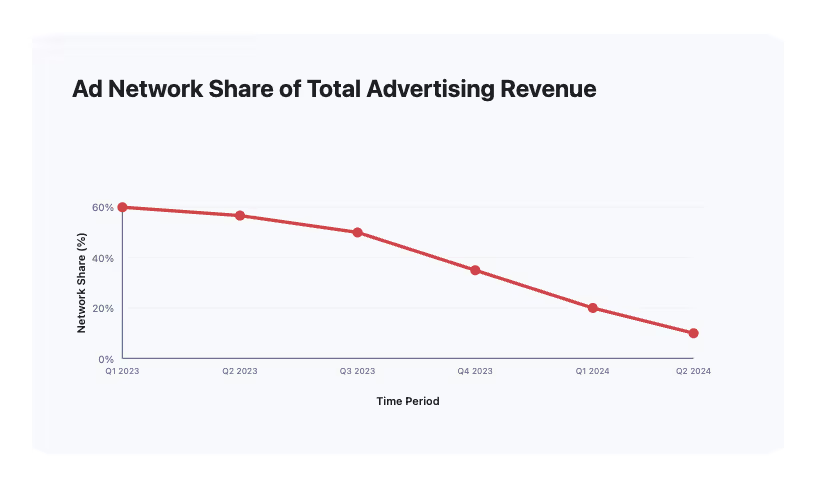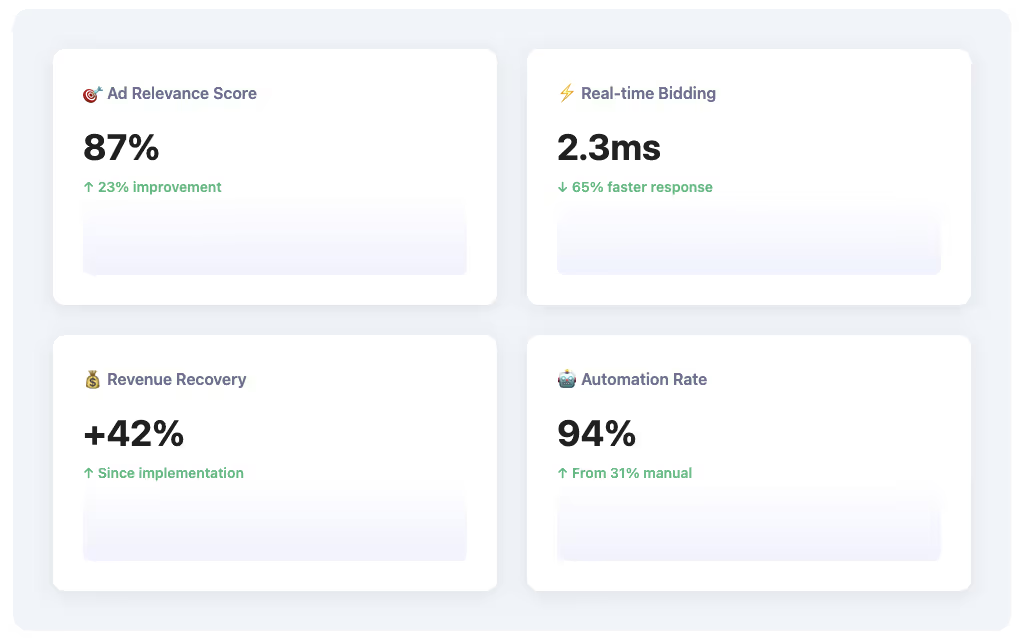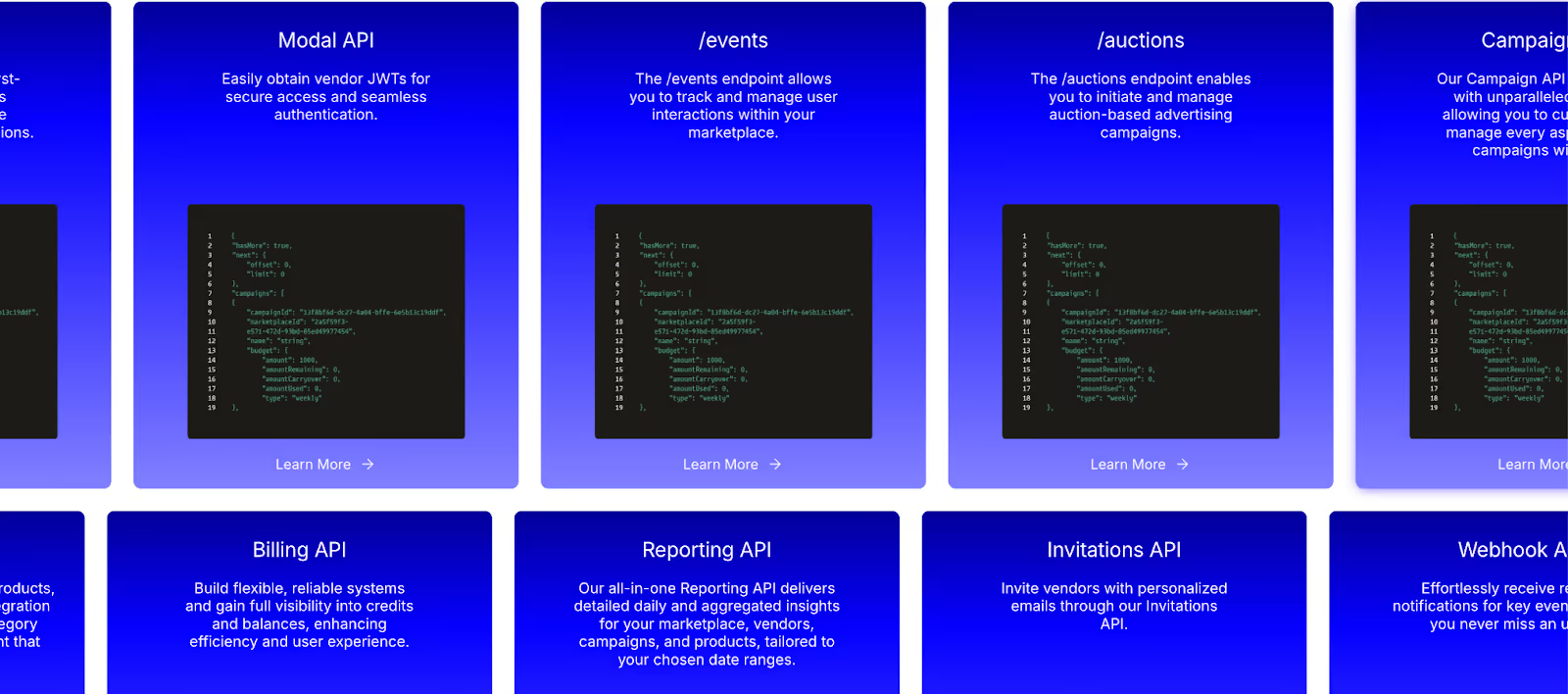
Introduction
If your ad network revenue has been declining and you're unsure why, you're not alone. Many marketplaces and retailers start off strong, then suddenly, numbers dip and ad performance drops. It's frustrating, especially when it starts to affect other parts of your business. You're probably asking yourself if it's the economy, your ad placements, or if users just aren't clicking anymore.

Chances are, it's a mix of several things. As advertising grows more complex, the old ways of running ad networks just don't work as well anymore. Buyers expect better performance, advertisers want clearer results, and user habits are changing faster than ever. If your platform is relying on strategies that worked a couple of years ago, it might be time for a reset.

Understanding the Decline in Ad Network Revenue
There's no single reason why ad revenue drops. It typically develops from multiple smaller issues. One or two alone might not raise alarms, but combined, they start to weigh down your system. The first step is knowing what to look for.

Common reasons ad network revenue takes a hit:
- Outdated targeting: If your platform isn't responding fast enough to changing user behavior or product trends, ad placements can feel random or irrelevant.
- Weak reporting tools: Advertisers want transparency. If your reporting lacks useful insights, they're less likely to reinvest.
- Lack of automation: Manual adjustments cost time and limit scalability. Without real-time optimization, it's tough to meet performance goals.
- Unclear auction models: Mixed or outdated pricing logic can confuse advertisers and lower bid confidence, especially when relying on fixed rates or basic setups.
- Too much ad clutter: Overloading your pages with ads, especially low-quality ones, can lead to banner blindness. Users stop noticing, and performance tanks.

For example, consider a retailer that specializes in home decor. In the past, they had strong returns from their seasonal campaigns. However, users are now seeing outdated product ads, panels are too generic, and reporting is slow. The result? Fewer conversions, frustrated advertisers, and lower earnings despite steady traffic.
The key to changing direction is to step back and take a comprehensive look at how your current system functions, where it stalls, and what is no longer performing its intended role.
Evaluating Your Current Ad Strategy
Before any fixes can happen, you need to know where your system stands. This isn't always easy, especially when the network's been growing or changing rapidly. But taking the time to assess what's working and what isn't is the most direct way to uncover weak spots before losses grow deeper.

What to check first:
- Auction logic: Are you running real-time, dynamic auctions? Or is your system still operating through set bids and fixed wins?
- Bid performance visibility: Do you provide advertisers with timely and detailed feedback?
- Ad relevance: Are placements aligned with user behavior?
- Budget pacing: Are budgets getting exhausted too quickly or underspent?
- Campaign tools: Can advertisers easily manage and optimize campaigns?
Even if things feel mostly stable, a single slow-loading feature or poor user signal can trigger a significant decline in revenue. Therefore, it's essential to examine the entire ad experience, from how your tools operate to what the user sees, and align it with how today's advertisers expect to work.

Implementing Effective Solutions
Fixing a revenue decline means more than just patching leaks. It means building systems that work at scale, adapt quickly, and improve continuously.
Strategies to prioritize:
- Smart ad placements: Focus on relevance, not just volume. Look at what happens before, during, and after a user clicks. Does the ad speak to their intent, or does it feel random?
- Real-time adjustments: Dynamic tuning for budgets, targeting, and creatives. Manual controls often can't move fast enough to keep up with how users behave across devices.
- Dynamic auctions: Real-time bidding encourages fair pricing and better quality. It also forces underperforming bids to improve, which in turn pushes up the overall quality across your network.
- AI-powered targeting: The best targets today are harder to find with basic rule-based logic. Predictive patterns that adapt to buyer behavior perform better and create more meaningful matches.
- Quality-first curation: Fewer, better ads beat cluttered, low-performing layouts. It enhances user trust and attracts marketing interest.
An electronics marketplace ran holiday campaigns that underperformed the year before. Their team realized they were pushing static banners without adjusting them to meet what buyers were looking for. By switching to intent-based placements and allowing budgets to shift in real-time between high-impact slots, their returns began growing again. It didn't take a massive overhaul, just more intelligent control over what they were already doing.

Future-Proofing Your Ad Network
Long-term success depends on how well your infrastructure handles change. Today's wins might not work tomorrow if your system can't evolve.
Here are a few ways to prepare for whatever's next:
Ways to future-proof:
- Stay modular: Utilize a flexible architecture that adapts easily. Look for tools and models that enable you to plug in new features without requiring a complete overhaul every time the industry advances.
- Prioritize transparency: Clean, detailed reporting builds trust. Advertisers will continue to request deeper visibility. Clean reporting and full control will always attract better campaigns.
- Build in flexibility: Let logic and targeting adapt to the context. Whether it's auction logic that can be adjusted or targeting that can be tailored based on context, the more adaptable your platform is, the stronger its results will be.
- Shorten feedback loops: Real-time insights drive faster action. The faster you can identify performance trends, the quicker your team can adapt. Waiting for end-of-month reports slows everything down.
- Automate with context: Smart automation tailored to your market performs better. Not all automation is equal. Tools that adapt to your specific marketplace behavior and audience patterns are more effective than generic logic.
Looking ahead means making choices that don't just address the current dip but also prevent it from happening again. That comes from having tools and processes that enable technical teams to move fast, ad buyers to work smarter, and your platform to scale with confidence.

Revitalize Your Ad Network Revenue with Topsort
If you've noticed a drop in ad network performance, you're not imagining it. Systems age, expectations evolve, and audience behavior is constantly in flux. But you don't need to start from scratch. Real progress comes from understanding where your ad engine stalls, improving the structure that supports it, and adopting smarter tools that evolve without extra weight.
The goal isn't just to recover lost revenue. It’s to design a system that gets better the more advertisers use it. By focusing on ad relevance, automating where it counts, and providing buyers with a platform that helps them succeed, you create lasting value for them and yourself. And that's what keeps your ad network healthy, efficient, and ready for the next phase of growth.
To give your ad network a robust boost and ensure steady growth, explore the tailored solutions Topsort offers. Our AI-driven tools help you stay ahead of the curve by refining your approach and enhancing your capabilities. Find out how you can improve your ad network and remain competitive in a rapidly changing landscape.


